Hello to Peggy Riley! A fellow Prime Writer and author of the fascinating and poetic AMITY AND SORROW, a beautiful piece of writing if ever I saw one.
Here’s the blurb:
AMITY & SORROW is a story about God, sex, and farming. It’s THE LOVELY BONES meets WITNESS: an unforgettable journey into the horrors a true believer can inflict upon his family, and what it is like to live when the end of the world doesn’t come.
In the wake of a suspicious fire, Amaranth gathers her barely-teenage daughters, Amity and Sorrow, and flees from the cult her husband ran. After four days of driving, Amaranth crashes the car, leaving the family stranded at a gas station. Rescue comes in the unlikely form of a downtrodden farmer, a man who offers sanctuary when the women need it most.
AMITY & SORROW is the story of these remarkable women, their lives before the night they fled, and their heartbreaking, hopeful future. For, while Amity blossoms in this new world, Sorrow will move heaven and earth trying to get back home.
And, meanwhile, the outside world hasn’t forgotten about the fire on the compound.
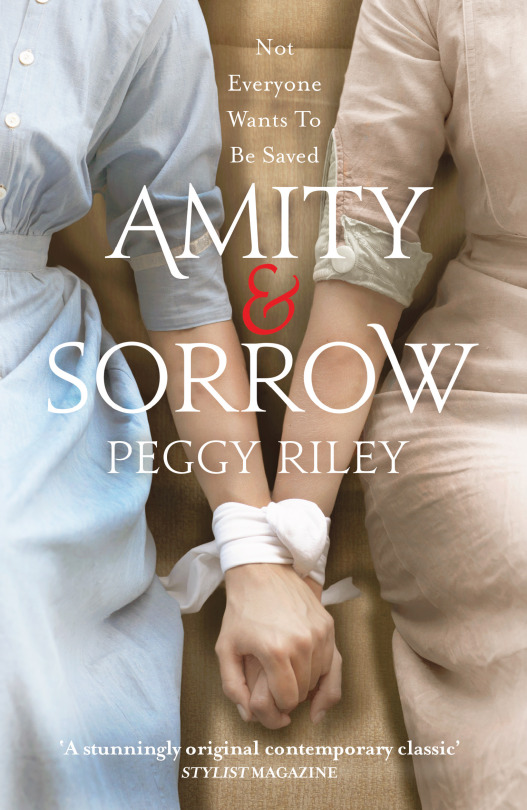
[1] You write in such luminous prose. So finely observed.
e.g.
’…how his over-big blue jeans hang off his skinny hip bones, how they pool
over-long onto greasy-toed boots.’
e.g.
‘He starts winding the hose back onto his shoulder, the water rolling out to
write onto the cement.’
How
do these come? Do you go back and work on them later or do they come fully
formed in the first draft?
Hi
Rebecca – thank you so much for reading Amity & Sorrow and for inviting me
to your blog! And thank you for the kind words about my prose.
There is nothing more personal than how we see the world. I tend to
think in images like these, trying to see the characters and the landscape,
trying to pin down what I see and what I mean. I write far too many images
and then spend many drafts trying to trim them back.
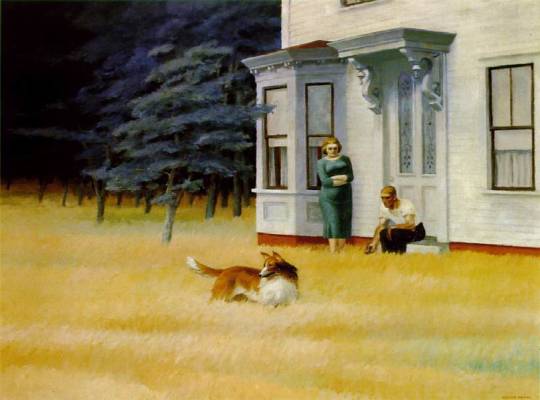
[2]
Whilst reading the descriptions of the settings, I got a strong visual sense of
a Hopper painting. The landscape seems empty and uncomprehending somehow. Have
you visited or lived in this area? Do you use a picture wall in your work room?
Or is this a landscape of the mind?
I
begin most pieces with the setting, actually, and then the task is to people it
with characters, to find out what’s happening there. Even as a playwright
it’s the environment, the world of the place that I’m trying to capture.
I have never been to Oklahoma, though my grandmother was born there, and
my father was from New Mexico. I have their senses of their West. I
had New Mexico’s terrain in my head, but I knew I wanted the sense of “No Man’s
Land” that the Panhandle provides. My descriptions came from Google Maps
and a few years spent with the Oklahoma Farm Report, which taught me absolutely
everything I know about farming!
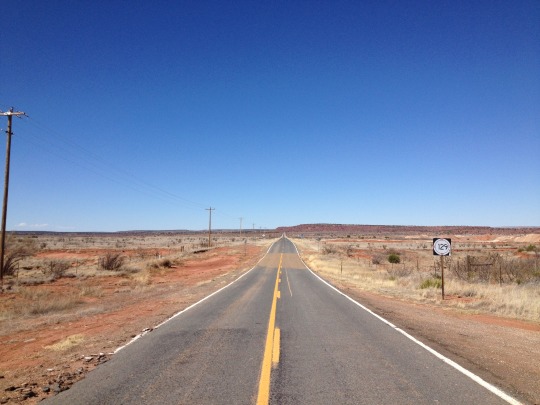
I do make mood boards, which hang over
my desk. (I’m attaching a picture of it.) More than landscape, they
help me to remember the “feel” I’m trying to capture. I wrote much of the
book while we had builders in, so it is also a very “dirty” book, very gritty,
and I kept a big bowl of my father’s arrowheads, that he had collected as a
boy, on my desk, along with his baby cowboy boot, his father’s dog tag and the
Kachinas. On a book tour, I had dinner with a sales rep who grew up in
Oklahoma, and he said I “nailed it”. That’s good enough for me!
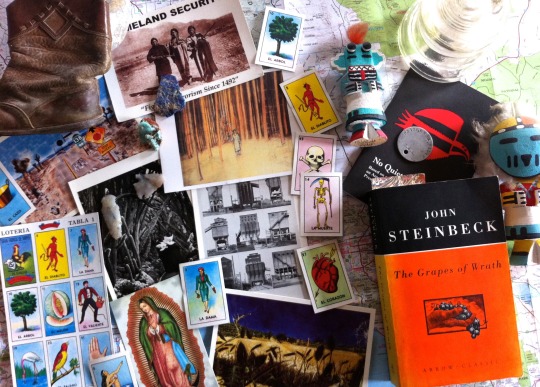
Peggy’s mood board for AMITY AND SORROW
[3]
I’m an atheist, but I’ve always loved Bible stories, particularly the language
and imagery therein. What do the Bible’s stories mean to you? Also, your prose
reads like a parable – stark yet beautiful. Was that deliberate?
I’m
a pagan myself, but I have always been drawn to the stories of the Bible and
its poetry, its stark and beautiful language. It is full of such hope and
such terrible darkness. I remember trying to come to terms with
Christianity as a teenager. It wasn’t for me, ultimately, but I am still
drawn to the longing I had, the sense of the “God-shaped hole” inside us and
how we fill it. Now, I fill it with stories. The tone of the prose
fit the characters, for me, and the sense of the land, the space and the light,
the attempt that all of them are making in trying to “grow”.
[4]
What is your particular interest in or experience of the Mormons or similar
religious groups? Does anything appeal to you about this way of life? And what
repels you?
I
am so fascinated by handmade faiths – and extreme faiths. They are such a
big part of America’s history and I am very drawn to their stories. I’m
from California, site of many a handmade faith and a fair few cults. I’m
interested in charismatic leaders who attempt something good and radical,
modern utopias, and the way they always spectacularly fall apart – how they
always have to “end the world”. I remember seeing the pictures of the
Jonestown Massacre, one California cult that moved to the jungles of Guyana,
all the prone bodies, the families with their arms around each other as they
died, still believing. I remember watching Charles Manson, an LA cult
leader, every time he came up for parole. More recently, we’ve had the
deadly siege in Waco and the conviction of former FLDS leader Warren Jeffs for
child sexual assault. I’m particularly interested in fundamentalist
Mormons and polygamous families, how it falls on the women to learn to live
together, to become sister wives. Polygamy makes sense when resources are
limited – a shortage of men or land or time. I’ve often thought it would
be wonderful to have a wife, but I wouldn’t be any good at sharing a husband.
Utopias fall apart for being too human, but marriages have to be.
We want to be on our best behaviour for our faith, but I think it would
be a struggle to be authentic in a group marriage. How do they do it?
While it does seem to work for many families, particularly my Twitter
friends The Darger Family:
https://twitter.com/TheDargerFamily?ref_src=twsrc%5Egoogle%7Ctwcamp%5Eserp%7Ctwgr%5Eauthor
I am more interested in how
hard it is. And, of course, in how it affects the children, both the
boys, who are excluded from the faith because the numbers of men must be
limited, and the girls, who will become more sister wives. I knew, in
Sorrow, that I had one daughter who would push very hard against the roles she
was asked to play.
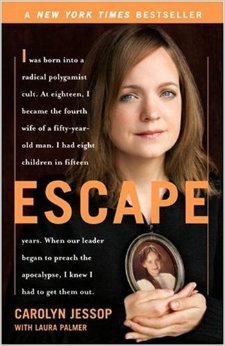
[5] What research did you carry out into this way of life?
None,
first hand, you’ll be glad to know… I read as many books as I could
about growing up in polygamous households and of escaping. Carolyn
Jessup’s “Escape" and Susan Schmidt’s “His Favorite Wife” were particularly
potent. Really, I just tried to put myself in the women’s shoes, all of
them. On Twitter, I talked to polygamous wives and to lost boys who’d
been forced to leave their faiths and their families.
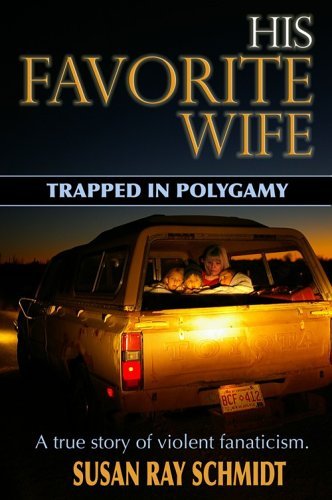
[6]
What was the spark for this narrative? Was it the burning house? The two girls of
the title bound together? Or something else?
It
was the house, yes. I saw a newspaper clipping of a wooden church on
fire, on a prairie. Right away, I could see women running from it, all
their long skirts brushing the grass, trying to get away from – something.
I had the women, but not much story. I knew it would be a
mother-daughter story, and the two girls arrived together, fully formed.
It is terrifically exciting when characters arrive and know who they are.
And I wanted this sense of them, bound together and always pulling apart.
It took me a long time to know the book would be called Amity & Sorrow, but
now it seems perfectly obvious. Their mother gets a lot of the narrative,
but, for me, it is the story of these two girls. I did a lot of writing
from Sorrow’s point of view, but she is hard to read. Maybe someday those
chapters will come out, too.
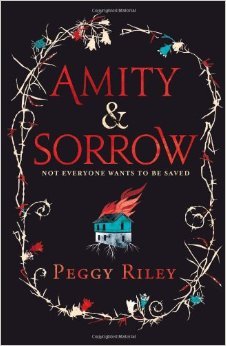
[7]
The structure is split into 3 parts – a month each and shifts back and forth
between the present tense, present day of the farm and the past tense of the
Before sections. How did you plan and then write these sections e.g. in
chronological order; separately or together; in the order we read it etc.?
I
wasn’t very conscious of structure, while writing it. I’ve been a
playwright for a long time and plays are extremely conscious of structure, but
I was really just trying to figure out how to get characters in and out of
chapters without having stage directions! However, I knew I wanted it to
be a short book, in terms of time. I wanted it to take place over a
single growing season, metaphorically. I wrote the present tense story in
order, because I didn’t know what would happen – I wasn’t sure what the ending
was, for a long time, though I knew how things would turn out for Sorrow. The
“Before” chapters were written backwards, because I didn’t really know what had
happened, either. I wrote the history of their church as if it were
unzipping or unravelling, so I wrote backwards, moving back from how it fell
apart to how it came together. I’m not a terribly organised writer – I
write quite intuitively, feeling my way through the story.
[8] Can you share anything with us about what you’re working on next?
I’m
finishing what I hope is the last draft of “my difficult second novel” and
rewriting “my far-less-difficult third novel”. I’ll just say that the
second novel is about race, war, and empire, and that my third is about five
women burying a man. I hope to have good news about them soon!
Thank you!
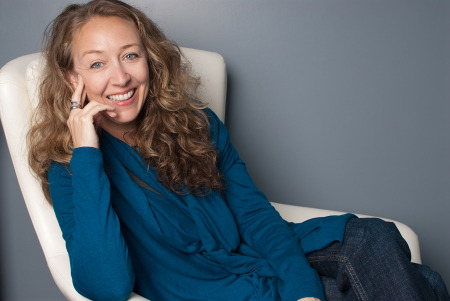
Thanks to Peggy for really interesting answers about her subject matter, research and writing techniques. I for one cannot WAIT to read both Books 2 and 3! They sound brilliant! Get on with them, woman!
You can find Peggy online here: